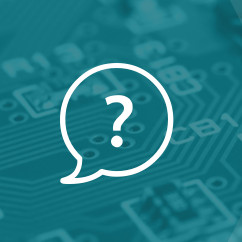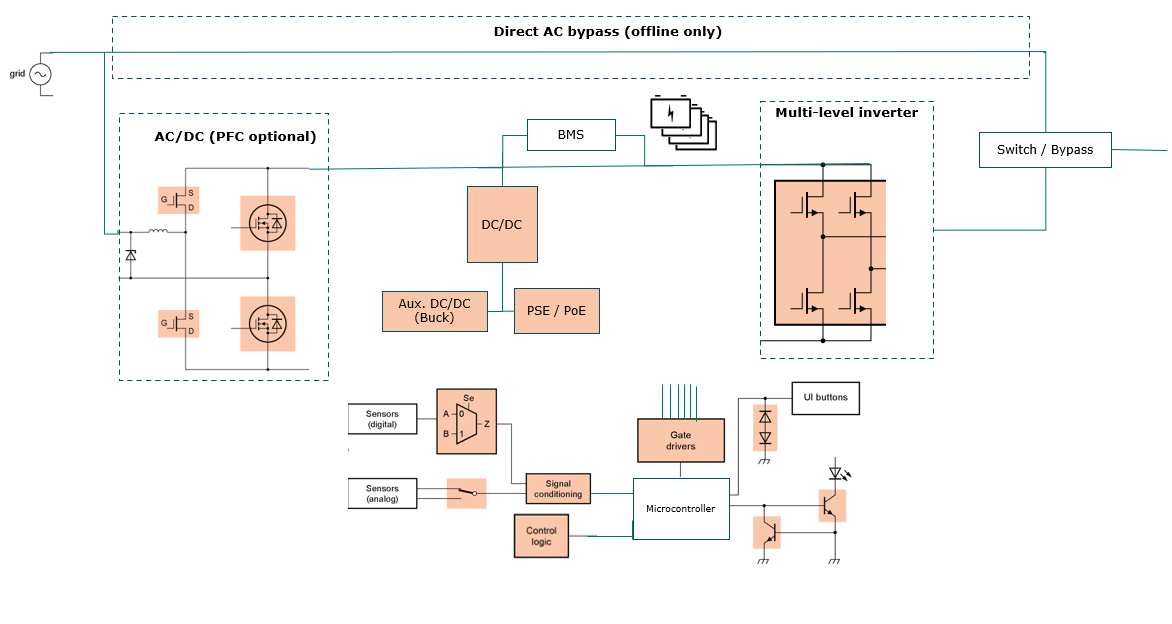Products - AC/DC (PFC) or DC/AC (Inverter)
Products - DC/DC (Converter)
Products - Signal conditioning
Products - HMI / MMI
Products - Auxiliary DC/DC / PoE
Design considerations
- UPS systems can be either offline or online, with online offering zero time delay when switching its power source compared
- Design must ensure adequate load balancing, voltage, and current protection, charge and discharge control, thermal management, fan control, monitoring, and communications.
- Designs can use a two-level topology but three-level Neutral Point Clamped (NPC) inverter topologies (T-NPC, A-NPC, or I-NPC) offer better efficiency and reduce EMI
MOSFET and GaN FET Handbook
Drawing on over 20 years’ of experience, the MOSFET and GaN FET Application Handbook: A Power Design Engineer’s Guide brings together a comprehensive set of learning and reference materials relating to the use of MOSFETs and GaN FETs in real world systems.

Let us help you with product and design questions
Contact our technical support desk for your technical questions.
